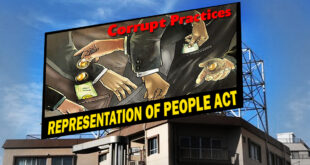A study points out that corneal blindness may no longer be the leading cause A recent World Health Organisation (WHO) report has estimated that, across the world, 19 million children are visually impaired and 1.4 million among them are legally blind. According to the National Program for Control of Blindness, the number stands at 8 out of 10,000 for childhood blindness in India. A study conducted in two taluks in Karnataka has now pointed out that corneal blindness is no longer the leading cause of childhood blindness. But blindness due to unavoidable causes are on the rise. They found whole-globe anomalies (small eye or absence of eyes) and uveal coloboma (a gap or a defect in the inner layers of the eye) to be the main causes of blindness. From August 2012 to December 2013, about 8,000 children below the age of 15 were screened in 30 villages and 25 urban wards in Tumkur district, Karnataka. Medical social workers enumerated and identified the children with eye defects and further examination was done by an ophthalmologist who was stationed in the area. Eye defects were detected in about 550 children in the examined group and refractive errors – when the eye is not able to focus images due to changes in the length of the globe or the shape of the cornea – were the most common cause. The study found that more than 25% of the blindness was caused by whole globe anomalies and 25% by uveal coloboma. The other causes include corneal xerosis, cortical visual impairment, and retinal problems. Corneal xerosis is dryness of the cornea, the most common cause being vitamin A deficiency. It shows up as a dry and lustreless cornea. In extreme cases, the cornea can turn white or sometimes ulcerate. Cortical visual impairment is a decreased visual response due to a neurological problem affecting the visual part of the brain. Retina problems usually cause day or night blindness and are mostly a hereditary disease.
Check Also
Corrupt practices under RPA,1951
What is the Representation of People Act, 1951? The electoral framework in India is regulated …
 Chinmaya IAS Academy – Current Affairs Chinmaya IAS Academy – Current Affairs
Chinmaya IAS Academy – Current Affairs Chinmaya IAS Academy – Current Affairs



